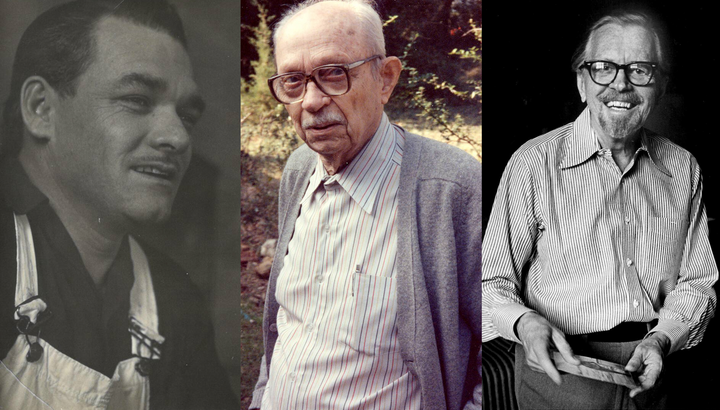The Carter Blog
Carter ARTicles
Collaboration, part 1: The art historian and the artist
May 15, 2024
How do an art historian and an artist work together? We asked art historian Jennifer Roberts to find out!
Roberts works across the arts, humanities, and sciences and has collaborated with artist Dario Robleto on a variety of projects, from contemporary exhibitions to book collaborations. We talked with Roberts to learn more about their unique collaborative relationship.
This blog post is part 1 of 3 in our series with art historian Jennifer Roberts. Read Collaboration, part 2 and Collaboration, part 3.
How have you worked with Dario Robleto?
A little over five years ago, I invited Dario to do an exhibition in the contemporary art gallery of the Harvard Radcliffe Institute. I was serving a term as the faculty curator there, and I was trying to build stronger connections between the arts/humanities and STEM fields on campus. I was transfixed by Dario’s work: his prints and sculptures resurrecting forgotten 19th-century pulse recordings; his stretched cassettes and melted vinyl records; his seashell gifts for distant beings; his beautiful essays about the historical relationship between medicine and emotion. I especially loved that his work was so wrapped up in astrophysics (my favorite topic). I was really impressed by the depth and rigor of his engagement with the space sciences and fascinated by his work with Ann Druyan’s life signs on the Voyager Golden Record.
In my own work, I had already spent 20 years thinking deeply about the 19th century, about the poetry and philosophy of materials, about scale, craft, time, and memory, and about the challenge of transmitting meaning across distance. And I had always been (like Dario) a scientist at heart. He seemed like a kindred spirit, and I wanted to scheme with him for a little while. I had no idea at the time that this “little while” was going to stretch well beyond the run of the exhibition.
There is a standard model that governs the way that artists and art historians are meant to interact. To generalize: the artist makes the work in some combination of mute materials, and then the art historian interprets it in language, usually by writing a heavily researched essay that puts it in some broader historical, theoretical, or social context. But from the moment we started working on the Radcliffe exhibition it was obvious that we were going to have to tweak the model. Dario had already done so much deep historical research, and so much writing, that I sometimes joked that he hadn’t left me anything to do. And I was always asking too many questions about the making, attending a bit too closely to the most arcane technical details of his materials and his process, in ways that I think surprised him a little. In essence, we met in the middle of the divide between making and writing: he is an artist that has long insisted on the importance of writing in his work, and I am an art historian who has long insisted on the importance of making as part of my own research.
Of course I did end up writing an essay for that exhibition (I also wrote an essay for his recent retrospective at the Block Museum). But the process of putting the show together felt more like an extended, enthusiastic conversation to me than it did like a division of labor. I never felt like I was doing the research alone. We had so much to talk about! His work made perfect sense to me, and I think mine made sense to him.
When the Radcliffe exhibition ended, we realized that we had a lot more to do. So we began collaborating on a book about Druyan’s EKG/EEG Voyager recording. Expanding and transforming the research that Dario has been doing since 2012, we are using that recording as a framework for a new kind of narrative about the long history (and distant future) of human sensitivity. Titled The Heartbeat at the Edge of the Solar System, it is scheduled to be published with Simon & Schuster in early 2026. Our work on the book is fully intertwined with the new film that Dario is debuting at the Carter. We wrote the script together, pulling from ideas that we’d developed in chapter drafts, and then the script fed back into the book. I also contributed some imagery to the film (I’m a photographer).
-

Roberts' source photograph, a macro photo of melting snow, for Ancient Beacons Long for Notice.
Photo by Jennifer Roberts -

A film still from Robleto's Ancient Beacons Long for Notice incorporating Roberts' photograph.
This book of ours is unusual in many ways, not least because we are an artist and an art historian writing together as peers on a shared intellectual project. This is not a common practice. In fact, whenever I mention to someone that I’m writing a book with Dario, they tend automatically to assume that I’m either writing a book about Dario, or that Dario is just providing illustrations for the book, or that I’m essentially Dario’s ghostwriter. No: we are thinking together every step of the way, puzzling through the whole challenge together, and we are both writing. Dario is a remarkable writer. I’ve had more experience in the medium, but wow—he can really put words together.
—Jennifer L. Roberts is the Drew Gilpin Faust Professor of the Humanities at Harvard University
Dario Robleto: The Signal is on view at the Carter through October 27, 2024. This exhibition highlights the artist’s multiyear exploration of the Golden Record and includes Robleto’s newly commissioned work Ancient Beacons Long for Notice, an immersive film that investigates the scientific, philosophical, and moral tensions of attempts to represent the totality of human life.






